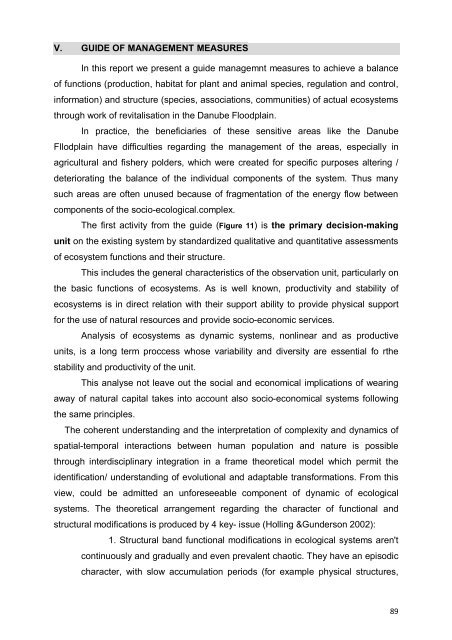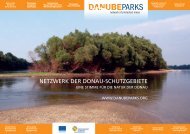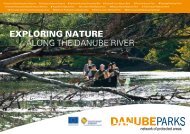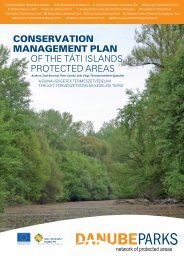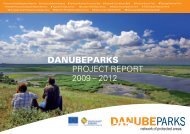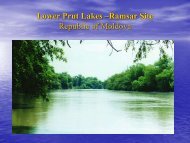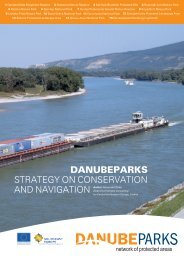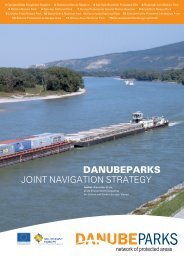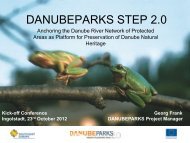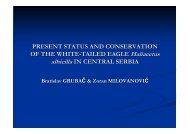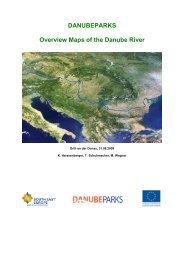Danube Rivers Morphology and Revitalization - DANUBEPARKS
Danube Rivers Morphology and Revitalization - DANUBEPARKS
Danube Rivers Morphology and Revitalization - DANUBEPARKS
You also want an ePaper? Increase the reach of your titles
YUMPU automatically turns print PDFs into web optimized ePapers that Google loves.
V. GUIDE OF MANAGEMENT MEASURESIn this report we present a guide managemnt measures to achieve a balanceof functions (production, habitat for plant <strong>and</strong> animal species, regulation <strong>and</strong> control,information) <strong>and</strong> structure (species, associations, communities) of actual ecosystemsthrough work of revitalisation in the <strong>Danube</strong> Floodplain.In practice, the beneficiaries of these sensitive areas like the <strong>Danube</strong>Fllodplain have difficulties regarding the management of the areas, especially inagricultural <strong>and</strong> fishery polders, which were created for specific purposes altering /deteriorating the balance of the individual components of the system. Thus manysuch areas are often unused because of fragmentation of the energy flow betweencomponents of the socio-ecological.complex.The first activity from the guide (Figure 11) is the primary decision-makingunit on the existing system by st<strong>and</strong>ardized qualitative <strong>and</strong> quantitative assessmentsof ecosystem functions <strong>and</strong> their structure.This includes the general characteristics of the observation unit, particularly onthe basic functions of ecosystems. As is well known, productivity <strong>and</strong> stability ofecosystems is in direct relation with their support ability to provide physical supportfor the use of natural resources <strong>and</strong> provide socio-economic services.Analysis of ecosystems as dynamic systems, nonlinear <strong>and</strong> as productiveunits, is a long term proccess whose variability <strong>and</strong> diversity are essential fo rthestability <strong>and</strong> productivity of the unit.This analyse not leave out the social <strong>and</strong> economical implications of wearingaway of natural capital takes into account also socio-economical systems followingthe same principles.The coherent underst<strong>and</strong>ing <strong>and</strong> the interpretation of complexity <strong>and</strong> dynamics ofspatial-temporal interactions between human population <strong>and</strong> nature is possiblethrough interdisciplinary integration in a frame theoretical model which permit theidentification/ underst<strong>and</strong>ing of evolutional <strong>and</strong> adaptable transformations. From thisview, could be admitted an unforeseeable component of dynamic of ecologicalsystems. The theoretical arrangement regarding the character of functional <strong>and</strong>structural modifications is produced by 4 key- issue (Holling &Gunderson 2002):1. Structural b<strong>and</strong> functional modifications in ecological systems aren'tcontinuously <strong>and</strong> gradually <strong>and</strong> even prevalent chaotic. They have an episodiccharacter, with slow accumulation periods (for example physical structures,89


